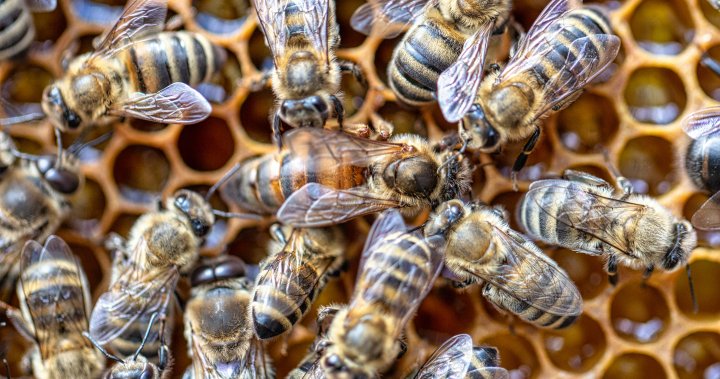The importation of queen bees from warmer countries like Chile is a common practice among Canadian beekeepers who are looking to mitigate winter losses and boost colony health. Rebecca Krowelski, a beekeeper in Winnipeg, imports Chilean queens nearly every year for her hives. She emphasized the importance of having a queen that can overwinter well, as it ensures the colony’s survival and productivity in the spring. While importing queens can be beneficial, Krowelski also highlighted the advantages of raising local queens that are acclimatized to Canadian winters and have desirable traits. This approach may be more suitable for small hobbyists who only need a few queens.
Commercial beekeepers like Jeremy Olthof in Alberta rely on importing queen bees to meet pollination needs and maintain strong hives for honey production. The short Canadian season and the labor-intensive process of raising queens locally make importing queens a necessity for many beekeepers. However, the process of importing queen bees comes with its regulatory requirements, such as obtaining an import permit from the Canadian Food Inspection Agency. Despite the challenges, the numbers show a significant increase in the importation of foreign queen bees into Canada, with over 343,000 queens brought in during a single year.
The decline in honey bee health in Canada is a significant concern, with issues such as varroa mites causing widespread colony losses. The winter losses experienced by Canadian beekeepers have been steadily increasing, with national losses reaching alarming rates. To combat these losses and rebuild colonies, beekeepers turn to imported queens to establish new hives. The reliance on imported queens has been increasing over the past decades, with more queens being purchased from international sources. The importation of queens from countries like the United States, Chile, Australia, and New Zealand has become a lifeline for Canadian beekeepers grappling with colony losses.
Despite the benefits of imported queen bees, there are challenges and risks associated with the practice. Queen bees from warmer climates may struggle to adapt to Canada’s harsh winters, raising concerns about their long-term viability in the country. Additionally, imported queens are at risk of bringing in diseases and pests that could negatively impact the Canadian bee population. Pressure from government agencies is pushing beekeepers to reduce their reliance on foreign queens and explore domestic options. Initiatives like the Saskatraz Breeding Program in Saskatchewan aim to produce queen bees domestically to reduce dependence on imports.
Beekeepers like Peter Dicks from Ontario are using foreign queen bees to help build up their colonies and combat the rise of varroa mites. Despite the challenges of raising bees in a colder climate, beekeepers remain dedicated to their craft, driven by their love for these vital insects. Importing queens remains a common practice among many Canadian beekeepers, but efforts to increase domestic honey bee supplies and improve the resiliency of the beekeeping industry are underway. While some beekeepers prefer to import queens due to the challenges of local queen rearing, there is a push to find more sustainable and resilient solutions for the Canadian beekeeping industry.















